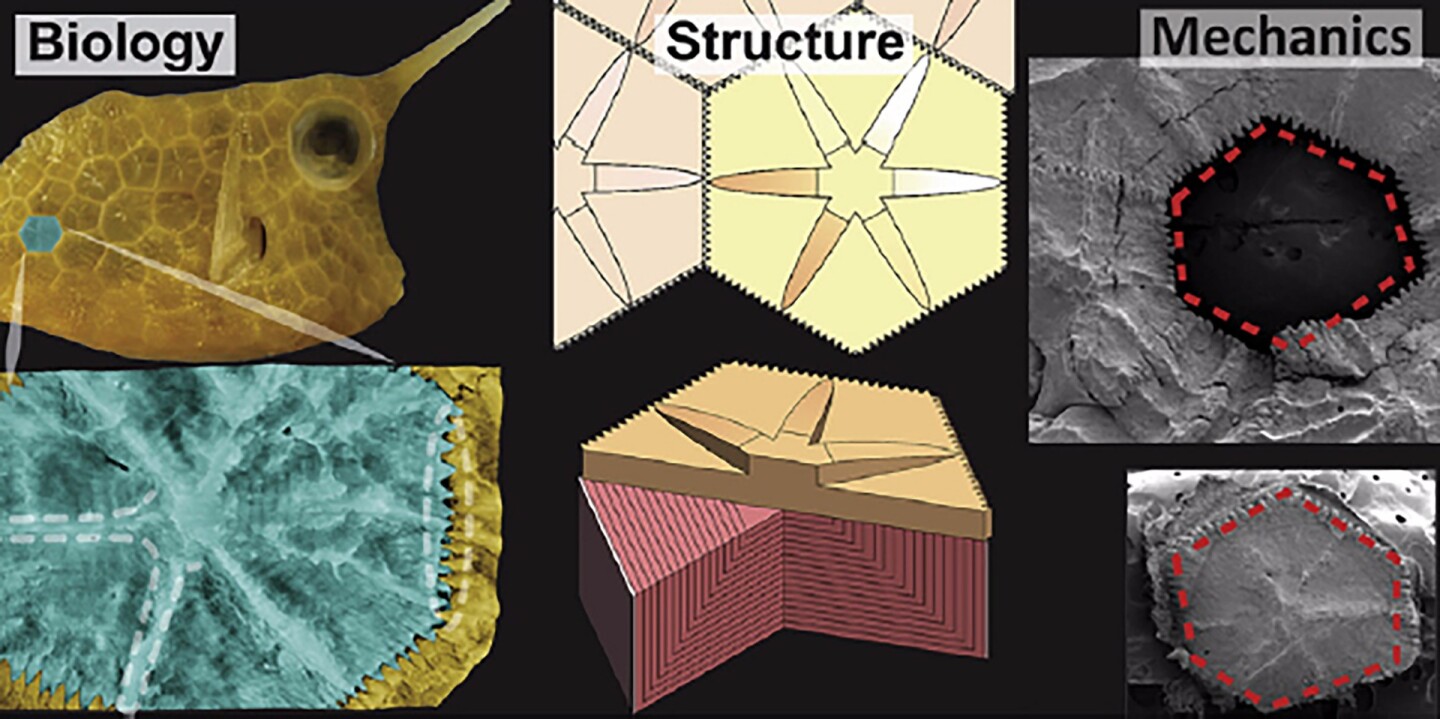Researchers from the University of California, San Diego (UCSD) are taking inspiration from nature in the search for new materials that could one day be used to create more effective body armor. The study, which was supported by the US Air Force, focuses on the unique structure and strength of the hexagonally-scaled shell of the boxfish.
The idea of looking to nature for inspiration when it comes to next-gen armor isn't anything new. We've seen numerous studies over the last few years that focus on that same idea, including efforts to copy the structure of overlapping fish scales and even the properties of sea sponges to develop strong yet flexible armor.
Following in the footsteps of that research, the UCSD team decided to focus on the boxfish, an animal that's been able to survive for some 35 million years in an environment dominated by aggressive fish that are often much larger than it.
To unravel the secrets of the ancient creature, the team used electron microscopy to study its carapace and took cross sections of the fish, using micro-computer tomography to characterize its structure.

While the majority of fish have overlapping scales, the boxfish's carapace is made up of hexagonal-shaped scales called scutes connected by sutures, which are similar to the connections found in a baby's skull before the bone solidifies. This gives the creature a hard frame, but still allows for a certain amount of flexibility.
But what actually makes this setup so strong? Well, the key lies in a star-like structure at the center of each and every scute, which allows for the distribution of stress across the entire surface. Interestingly, the team discovered that there's more to the boxfish's defensive capabilities than that outer layer of scutes, formidable as it may be. Beneath it is a complex layer of interlocking collagen fibers, which is itself extremely difficult to penetrate.
The team tested the strength of the dual layered defenses by pulling them apart both vertically and horizontally. They found that the sutures play a big part in the durability of the overall setup, exhibiting a zigzag pattern that locks the scutes together upon impact. The team believes that continued study of the boxfish's protective attributes could lead to more effective body armor.
"These damage-resisting structures have evolved for millions of years in nature and are being studied with support of the US Air Force to hopefully guide us to bio-inspired designs that will offer more protection against impact than our conventional ones," said paper author Marc Meyers.
The UCSD team published the findings of its study in the journal Acta Materialia.
Source: UCSD





